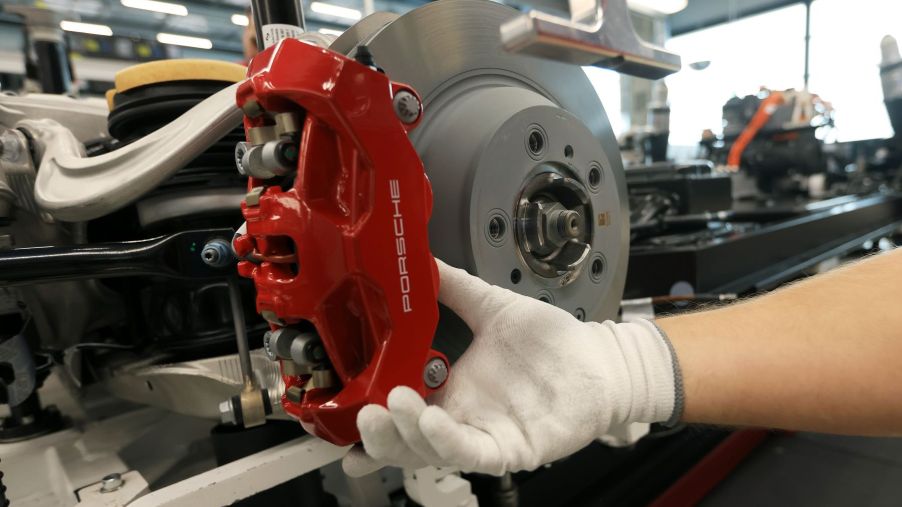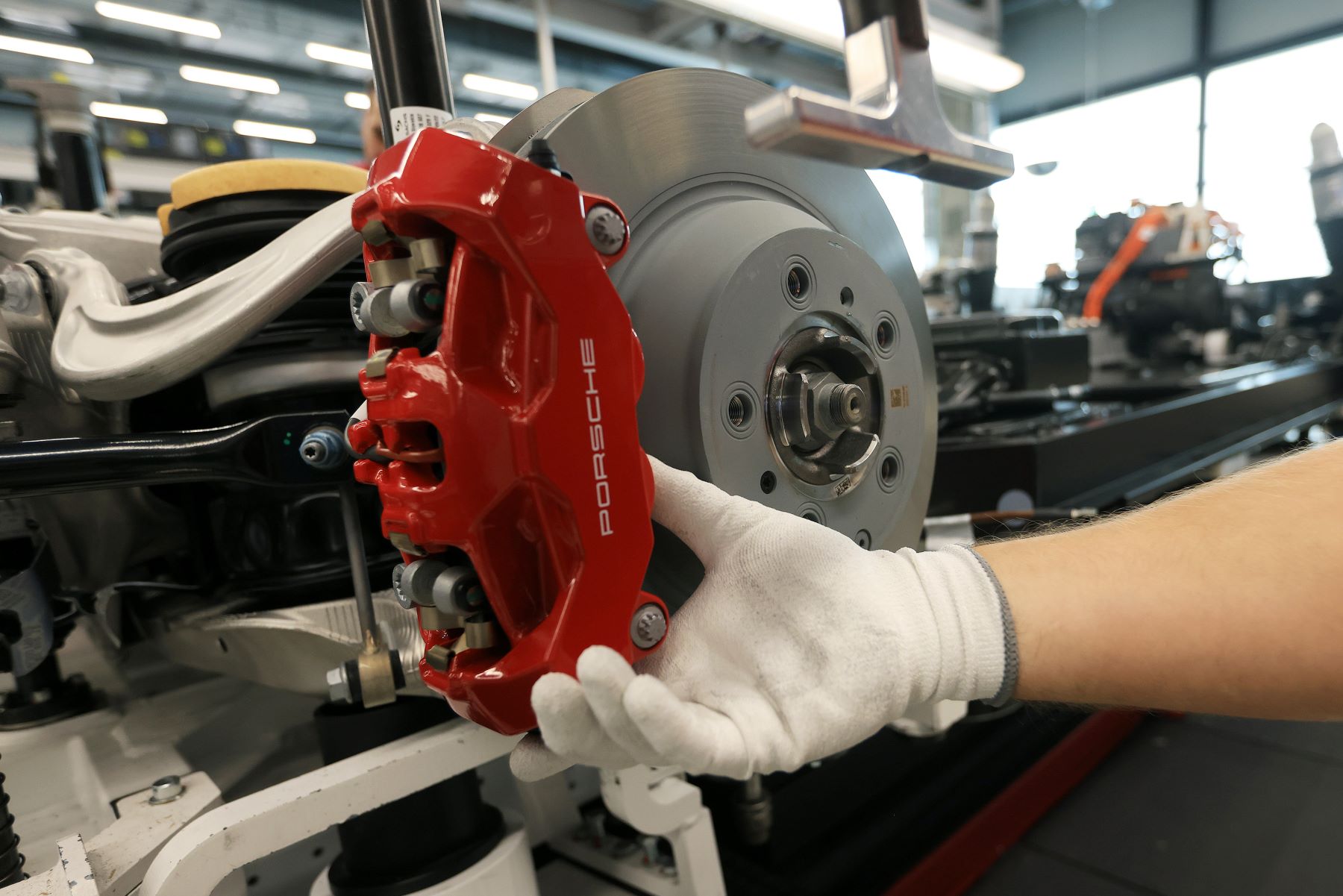
Do Electric Vehicles (EVs) Have Brake Pads?
An EV and a gas-powered vehicle have many of the same components, including brakes. However, electric vehicles’ brakes don’t perform the same because EVs use regenerative braking, making fewer brake maintenance trips to the shop.
Since the performance is different, does that mean they don’t have brake pads? Let’s find out and look at what regenerative braking is.
How do brake pads work on gas-powered vehicles?

In a gas-powered car, the engine runs the wheels, which spin at a high rate going down the road. When you need to stop, you press the pedal, releasing brake fluid flowing from the master cylinder to the brake’s calipers.
The calipers will squeeze the brake pads against the rotors on the wheels. According to HowStuffWorks, this causes friction and helps the rotors to slow down and stop spinning. There are a few different types of pads available on the market. Which one you need depends on what kind of vehicle you have.
Nowadays, most vehicles on the road use organic (non-metallic) or metal brakes. Organic ones are made from glass, resins, and rubber materials, making them the softest form of pads. However, they don’t last very long.
Metal pads are formed by combining synthetics and metals bonded to organic resin. These pads are much more heat and wear-resistant. However, the disadvantage of using them is that when the pads are cold, you have to apply much more pressure than when they’re warmed up.
The ceramic brake pads are the best-performing pads available. They’re typically used on high-end sports cars. The only issue is that they take a while to warm up to perform as the metals do.
How do brakes work in electric vehicles?
Since electric vehicles run on a few different components than gas-powered ones, do the brakes perform differently? Well, yes and no. Because friction-style brakes are the most efficient when needing to stop quickly, EVs have to run on the same type as gasoline cars. However, there’s one significant difference in how the two types perform.
Electric vehicles will use their motors to slow down the car, whereas gas-powered vehicles use a braking system separate from the engine. Additionally, EVs don’t use their brakes as often. Brakes are mainly meant for quick-stopping instances, such as when someone pulls out in front of you. Because of this, rust tends to form on brakes.
Meanwhile, gas-powered vehicles don’t rust because the brakes generate heat, which evaporates any pad moisture. According to The Brake Report, electric cars don’t produce as much heat, so moisture collects in the system. Stiction (sticking together of components) forms when you don’t use the brake components often enough, which is the biggest downside to regenerative braking on EVs.
How does regenerative braking work on an EV?
When you drive an electric vehicle, the braking system will use the energy created from the brakes and put it to use by diverting it to the car’s battery, helping to lightly recharge it as you drive down the road. Because they don’t use the brakes as often, EV pads last much longer than those from gas-powered cars.
However, regenerative braking isn’t as efficient when the battery is cold. When you start up an EV, it takes a bit to warm up the vehicle, so you’re not going to recuperate as much energy as you would when the car is warmer. That is, unless you run the vehicle for a few minutes to warm it up before you take off and drive.
Brake pads in EVs and gasoline-powered vehicles are pretty similar in design, but they perform much differently due to regenerative braking. While regular brakes produce energy, they don’t have anywhere to send it to for the car to benefit from it. Meanwhile, electric vehicles use the energy they capture from the regenerative braking system.


